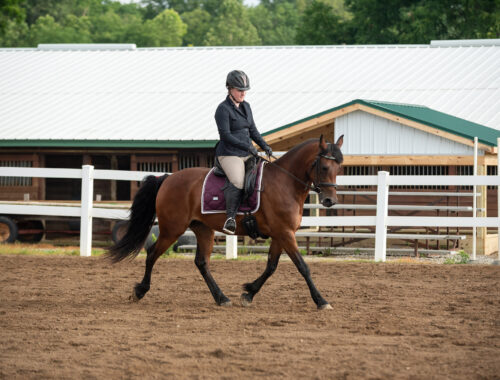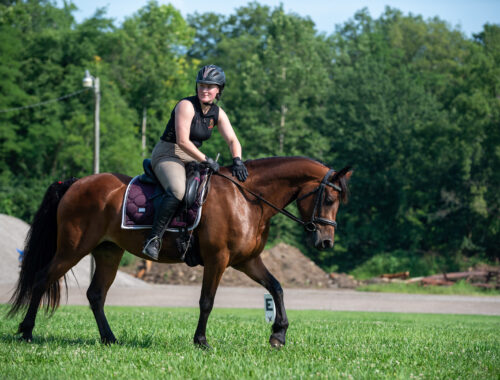The Half Halt
Half Halt Defined
The half halt is a nearly invisible, simultaneous action of the hand, seat and legs used to capture the horse’s attention and regain balance.
The secret to effective half halts is balance of the aids. If the rider applies too much leg, the horse will drive forward through the hand and come over top of the bit. If too much hand is applied, the horse will lose momentum. Applying the aids in their appropriate order and in balance with each other will result in an effective half halt and well balanced, collected horse.
How to Execute the Half Halt in Trot
Start in working trot rising
Apply leg aid in constant pressure and deepen the seat to drive the horse forward
Apply outside hand by closing the fist
Pulse inside hand by closing and opening the fingers
Release and praise horse with pat
When to use the Half Halt
It is imperative that the horse be sensitive to both the leg and rein aids. He must also reach for the bit. Only then should the rider focus on training the half halt.
- To capture the horse’s attention
- To slow the tempo
- To achieve lighter contact
- To increase collection
- To improve cadence
Each of the above reasons relates to confirmation of or improvement of the horse’s balance. Half halts can be used as needed so long as appropriate releases and praise are used.
Common Errors in Execution
- Too much leg
- Too much hand
Author: Dressage Academy
Free Walk
The Half Pass
You May Also Like

What’s Your Super Power?
August 8, 2025
Does Consistency Really Matter?
August 9, 2025
4 Comments
Pingback:
Pingback:
Pingback:
Pingback: